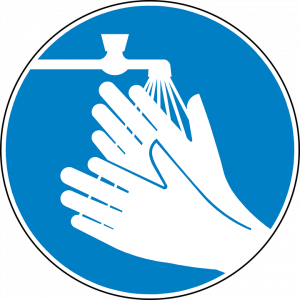Skin Care
Hand hygiene best practice and skin health
As employees start to return to work, following the coronavirus lockdown, and we adjust to the ‘new normal’, many employers and health and safety professionals will be seeking advice about how to adhere to government guidance on hand hygiene best practice.
 Knowing when to use soap and water and when to use sanitiser is crucial. So is, though, the importance of maintaining the health of skin on the hands as poor skin condition can be painful and debilitating, and lead to less frequent hand hygiene actions that can subsequently increase infection transmission. With skin care experts at SC Johnson Professional, we take an in depth look at hand hygiene, skin health and best practice.
Knowing when to use soap and water and when to use sanitiser is crucial. So is, though, the importance of maintaining the health of skin on the hands as poor skin condition can be painful and debilitating, and lead to less frequent hand hygiene actions that can subsequently increase infection transmission. With skin care experts at SC Johnson Professional, we take an in depth look at hand hygiene, skin health and best practice.
Hands are central to germ transmission
We automatically use our hands to carry out most daily tasks, from eating to opening doors, so it’s no surprise that hands are one of the main pathway for germ transmission – in fact, 80% of all infections are transmitted by hands. Everyday life can bring us into contact with a range of germ hotspots such as mobile phones, keyboards, door handles and light switches, and so practising regular, thorough hand hygiene is crucial.
How hand washing and sanitising helps
Hand washing in itself, for example, is an easy, effective and affordable way to stop the spread of germs and infections. When germs are not removed or washed away thoroughly, they can be passed from person to person and spread sickness. Hand washing with soap physically removes germs from the hands; soap contains ingredients known as surfactants, which break down the oils and dirt on the skin. Friction created by rubbing the hands helps the surfactants to encapsulate the dirt and hold it away from the skin – water then rinses this away, which is why thorough rinsing is important.
With this in mind, hand washing then helps to prevent infection for a number of reasons. Firstly, people frequently touch their eyes, nose and mouth without realising, which allows germs to enter the body easily. Secondly, germs on unwashed hands can contaminate food and drink during preparation, which is then ingested, or, they can contaminate other surfaces, where they could then be transmitted to others.
Hand hygiene best practice: How do you wash your hands properly?

The following advice is recommended for good hand washing practice:
- Hands should be washed regularly and especially before and after eating, after touching potentially contaminated surfaces such as door handles or light switches, and after coughing or sneezing and using the washroom;
- A good hand washing technique needs to be employed in order to clean the hands thoroughly and thus prevent the further spread of germs;
- Hand washing is a key aspect of hand hygiene, visibly removing soiling from the hands as well as high levels of bacteria and viruses when carried out correctly.
There are also many benefits to hand sanitising for those without soap and running water readily available. Speed of use and a rapid reduction in the numbers of micro-organisms on the skin are two such benefits, and the World Health Organization cites hand sanitiser as one of the best methods available to avoid spreading germs. It is recommended that sanitisers are used before entering the work area, and after coughing, sneezing, wiping the nose or touching contaminated surfaces.
When should I use hand sanitizer?
The following advice is recommended for the use of hand sanitisers:
How to handrub? With alcohol-based formulation
World Health Organization says hand hygiene, either with soap and water or with alcohol-based handrub, is one of the best ways to avoid getting sick and spreading infections to others.
Why is handwashing so harsh on your skin?
For many workers, hands are vital tools of the job, and if they become damaged from poor skin health, it is not only unpleasant but could affect an employee’s ability to carry out their work effectively, and run the risk of less effective hand washing. Dry, chapped or irritated skin can all be factors in causing low hand hygiene compliance. Healthy skin condition is an important element in ensuring good hand hygiene practice especially when washing the hands more frequently, which is why caring for the skin is so vital.
Healthy skin contains natural lipids, moisture and bonded cells on its surface to create a protective layer (the stratum corneum) against physical contaminants and infection from pathogens. This layer needs to be kept healthy, in order to protect against the penetration of contaminants. Using moisturising creams helps to nourish and condition the skin, and their regular use helps to encourage the skin’s own production of barrier lipids and cell renewal.
One of the main factors that can affect skin condition is frequent and prolonged contact with water, workplace contaminants or cleaning materials. This kind of contact can occur through either poor or improper hand washing technique, or general surface cleaning. The risks that accompany poor skin condition are many and varied. As the skin’s layers are broken down, deeper layers of the skin are exposed which can result in redness and cracked skin, which in turn can lead to impaired grip and pain, as well as decreased dexterity, and in the worst case, work-related skin disorders.
Whilst the solution may seem like a simple one – use of a moisturising cream – not all creams are created equal. Using fragrance-free moisturising creams can help reduce the risk of sensitisation. Moisturising creams designed for industrial settings, for example, have been specially formulated to accompany the use of stronger hand cleaners, and to care for the skin whilst maintaining grip.
Damaged skin should not be seen as an occupational hazard to be endured, and as demonstrated above, it can actually be harmful. It is critical, now more so than ever, that employees understand the importance of practising good hand hygiene, which method to use and when, and finally, the importance of looking after the health of their skin too.
It is key that awareness is raised around the potential dangers of over-exposure to UV radiation, among both employees and health & safety professionals. Building on studies conducted in 2017 and 2019 with outdoor workers, this year SC Johnson’s UV study surveyed health & safety officials at UK companies, with 114 participating.
Click here to download the 2020 Sun safety survey results
Hand hygiene best practice and skin health
Advice for employers and health & safety professionals on how to adhere to government guidance on hand hygiene best practice.
Safety & Health Practitioner
SHP - Health and Safety News, Legislation, PPE, CPD and Resources Related Topics
Metalworking fluids: Most businesses inspected ‘not doing enough’ to protect workers
SHP’s most-read articles of 2023
Legionella risk in RAAC affected buildings

 Knowing when to use soap and water and when to use sanitiser is crucial. So is, though, the importance of maintaining the health of
Knowing when to use soap and water and when to use sanitiser is crucial. So is, though, the importance of maintaining the health of 